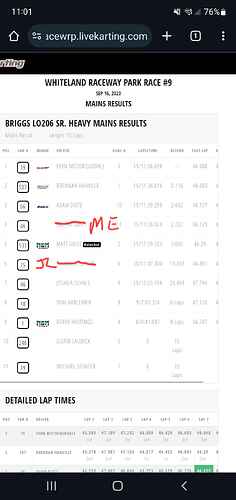Agree, based on the 1,000s (literally) of 206 dyno curves I’ve been privvy to, failing a major mechanical malady, the spread coming in was about .8 from worst to best and 0.2 going out.
One thing worth noting is that those bumps are for a broad part of the curve. That’s to say you’re looking at a steady .2 across the range.
The work basically comes down to making sure the engine gets what it needs in the fuel curve, getting the idle speed screw out of the way and checking the valve clearances.
Honestly there’s a lot of BS talked about engines and cherry picking in general. It for sure happens, but the difference it makes is not as much as we’re lead to believe. At least not with the likes of 206, KA100 etc. clone is another story altogether but it’s not intended for racing anyway.
To me, it’s mostly a psychological game…. If someone can convince you that they have the upper hand (even when they don’t)
Now some would say, that 0.2HP is a lot, which is fair.
My question is…… how much parity can we reasonably expect? I’d say that 2% is probably about the best, maybe? I’ve only ever seen 206 curves en-masse.
When it comes to KA “vs” 206, worth noting that extracting maximum performance on the day is arguably more of a challenge compared to a 206. So while you could have a strong (or not strong) engine on the dyno…. It’s a different story tuning it to the track, on the day. You can even blow one up if you tune in the wrong direction. That’s not as much of a worry with a 206.
You also have things like carb diaphragms, pop
off pressure etc to consider.
As I always say, do what’s best for you. Take in all the factors and don’t let yourself be pushed into some sort of perceived hierarchy.
Another thing I say…. You cannot stop people spending big amounts of money in Motorsport.
What you CAN do, is limit the difference is makes on track.
Thank you for coming to my Ted Talk.
